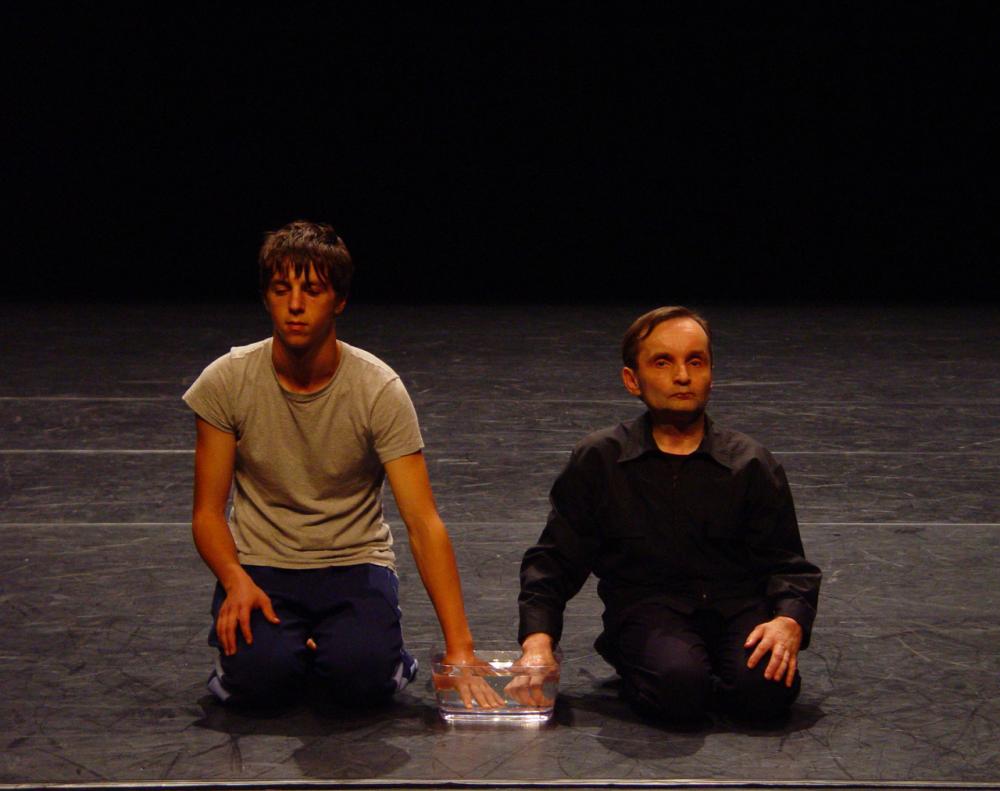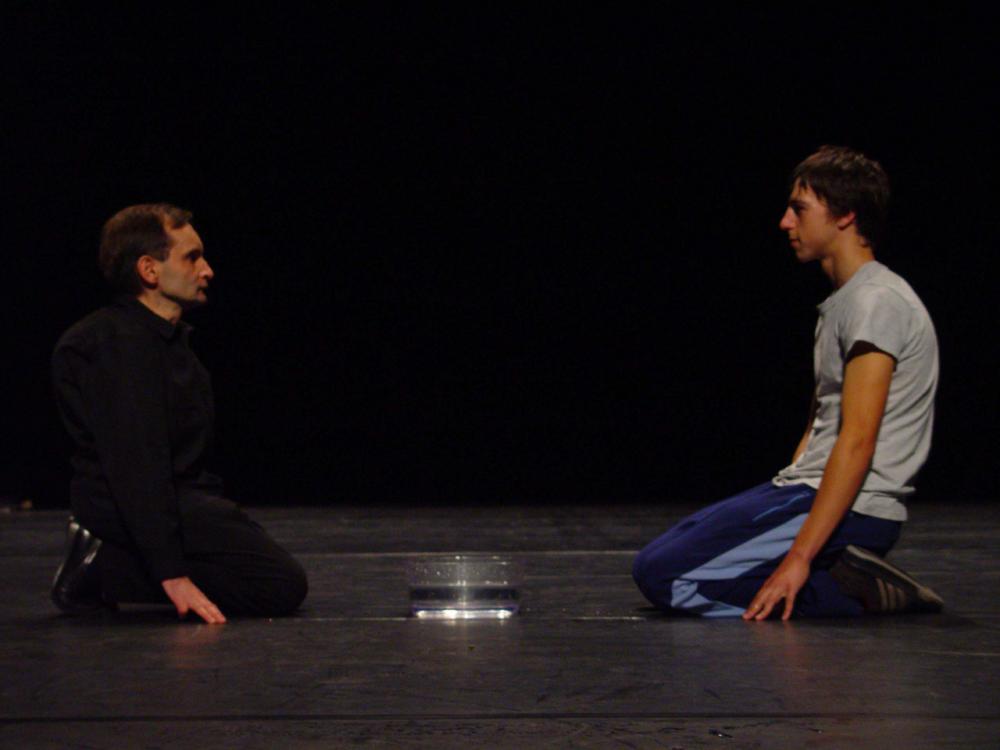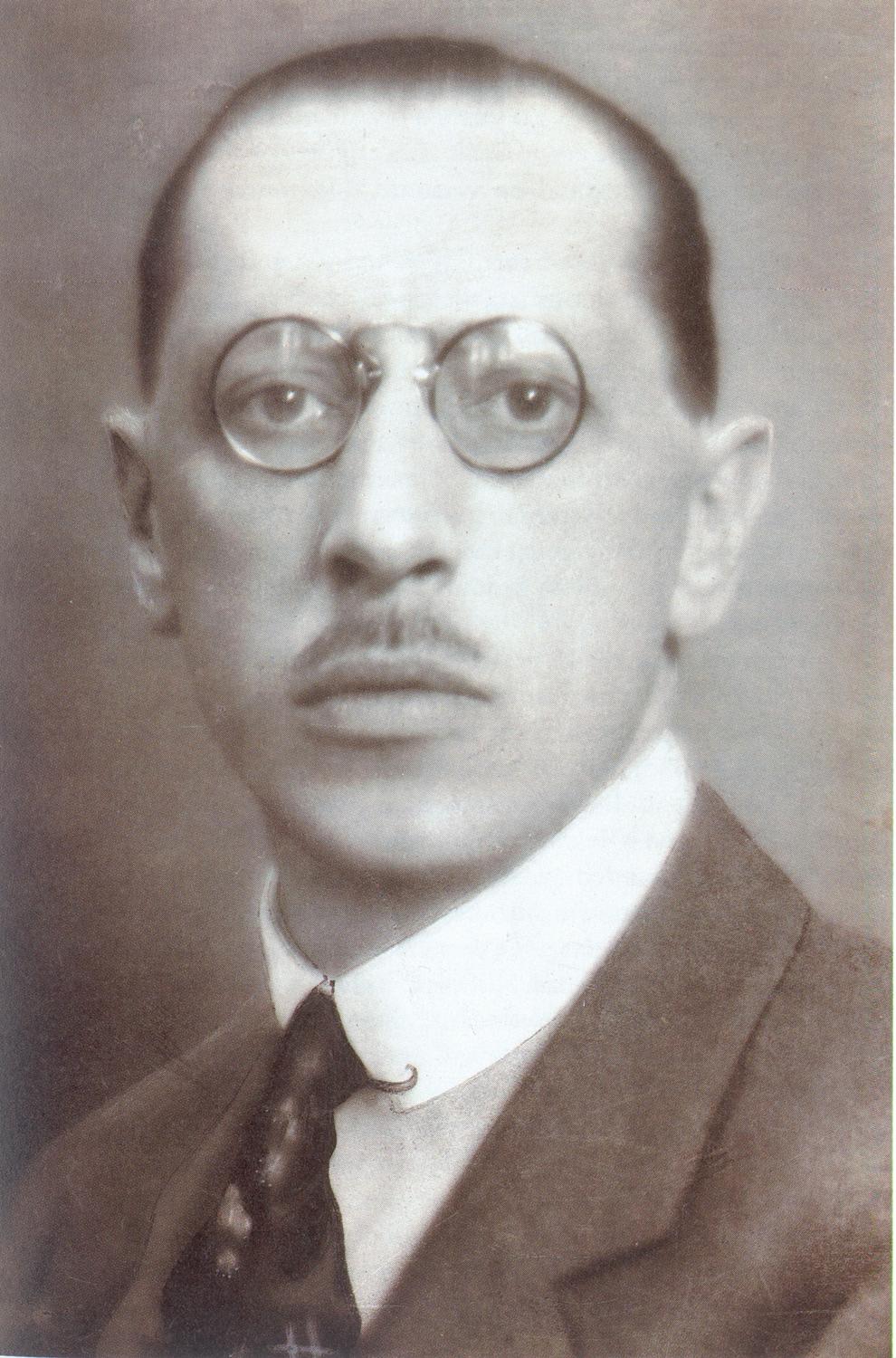Sacre, the Rite of Spring
Hoghe’s version of Stravinsky’s Le Sacre du printemps, with live music
Igor Stravinsky composed Le Sacre du printemps as ballet music in 1913. It was first performed that same year at the Théâtre des Champs Elysées in Paris, choreographed by Vaclav Nijinsky and danced by Les Ballets Russes. It became a ‘succès de scandale’, but this is not the only reason why it was so much of a milestone in the history of both music and dance. The power expressed by the stirring dissonant music, the break with the classical language of dance which Nijinsky brought about in his choreography and the highly erotically-charged ‘subject’ initiated a wave that even today has not yet subsided or been fully exhausted.
Many major choreographers, including Martha Graham, Maurice Béjart, Pina Bausch and Jérôme Bel have created their own versions of Le Sacre using Stravinsky’s score and have made their own interpretation of the libretto. In the original libretto the action took place in the heart of a primitive ancient Slavonic tribe: it is a consecration of spring, in which one young woman has to sacrifice herself in order to enable the rebirth of spring. During the wild sacrificial ritual the young woman literally dances herself to death. Life and death, ritual and fertility and the accompanying unveiled eroticism are at the core of this dance.
The German choreographer Raimund Hoghe (1949) worked as a dramaturge for Pina Bausch for ten years and in 1989 started making his own productions. The first were highly autobiographical: a look back at his childhood and youth in postwar Germany, a life full of unspoken desires and veiled loneliness, a world filled with the images of film stars and the popular songs of crooners, an attempt by this disabled man – he is small and hunchbacked – to come to terms with his body.
The music Hoghe has used in most of his productions was rather to sketch the atmosphere of an era than to dance to. But when he made Young people, old voices in 2002, in which he shared the stage with ten young non-professional performers, he incorporated several excerpts from Stravinsky’s Le Sacre du printemps. Hoghe danced to these passages himself in duets with the young footballer Lorenzo De Brabandere. From this arose the idea of choreographing the whole of the work and dancing it with De Brabandere. This piece opened at the Kaaitheater in January 2004 and was much applauded.
Hoghe did not have the means to use live music, so a recording of the orchestral score was used, introduced and ended by the voice of Stravinsky himself, who talks about the writing of this work and its first public reception. However, Hoghe continued to cherish the notion of one day performing his choreography with live music. The Klara Festival seemed to provide the perfect opportunity to do justice to Le Sacre du printemps in its capacity as a double milestone – in the history of both music and dance.
The version chosen was the adaptation for two pianos that Stravinsky himself made. The two pianists are Alain Franco and Guy Vandromme. Vandromme works as a pianist in Belgium and abroad and is a founding member of the Q-02 contemporary music and improvisation ensemble. Alain Franco is a pianist and conductor and has previously worked with Champ d’Action, Ictus, Rosas and Needcompany; he also teaches at P.A.R.T.S.
Two men at the piano and two men on stage. Two pas-de-deux. As far as Hoghe and De Brabandere are concerned one really can call it a duet. Hoghe created a linear, almost horizontal choreography reduced to extreme simplicity, where the two men mirror each other, different as the older hunchbacked and young energetic body may be. Their geometry and repetition give a ritual force to the routes the two performers mark out on stage. This strong link with the ritual is characteristic of Hoghe’s work, but here also refers to the initiation in the original libretto. The attraction towards each other and the erotic longing are tempered by a certain restfulness and acceptance: the realisation that something has to die to let something else live. The linkage of love and death is not experienced in a violent way. The intimacy and attention with which the two men carry out simple actions and movements is based on a deep awareness of each other’s presence.
concept Raimund Hoghe
chorégraphie & danse Raimund Hoghe & Lorenzo De Brabandere
collaborateur artistique Luca Giacomo Schulte
musique Igor Stravinsky
piano Guy Vandromme & Alain Franco
éclairage Raimund Hoghe & Amaury Seval
responsable de la production Anne-Lise Gobin
production Raimund Hoghe(Düsseldorf) & Groupe Kam Laï (Paris)
coproduction Montpellier Danse (Montpellier) & Theater im Pumpenhaus (Münster)
en collaboration avec le Festival de Flandre Bruxelles
avec le soutien de Kaaitheater & STUK (Leuven)


